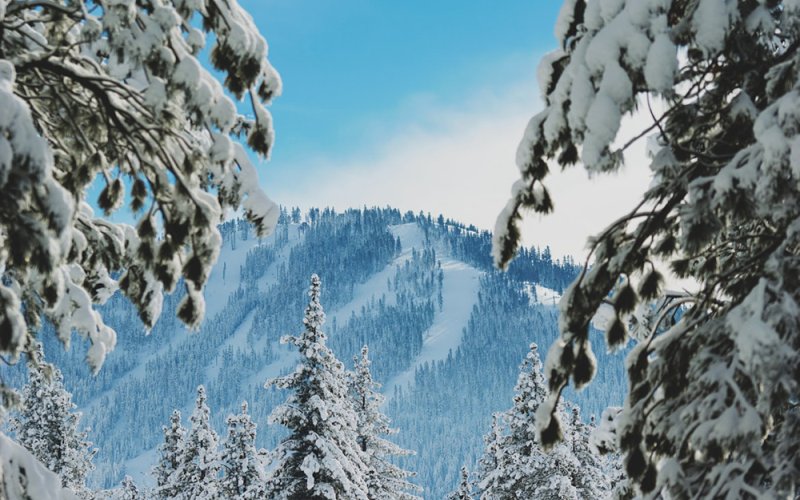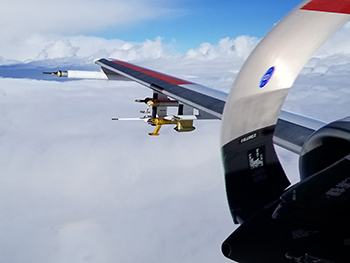UAlbany Partners on $3.6 Million ‘WINTRE-MIX’ Project to Improve Winter Weather Forecasting

ALBANY, N.Y. (Oct. 28, 2021) – When meteorologists forecast a winter storm, one of the most important elements to predict is the type of precipitation that’s going to fall. Each storm is unique and even the slightest temperature variation can lead to dramatically different outcomes. Surface temperatures hovering near freezing make prediction even more difficult, offering a wide range of possibilities, including rain, drizzle, freezing rain, ice pellets, dry snow and wet snow.
The project, titled “Winter Precipitation Type Research Multi-scale Experiment (WINTRE-MIX),” will focus on both variability and predictability of precipitation in near-freezing surface conditions, highlighted by a six-week observational field campaign that starts in February and centers on northern New York/Vermont and southern Quebec.
It combines expertise from UAlbany, the University of Wyoming, the University of Colorado and the National Research Council of Canada. The full team also includes collaborators from the University of Québec at Montréal, McGill University, and Environment and Climate Change Canada.
“We’re focused on better understanding the processes that influence precipitation type and amount when the temperature is near freezing. Will it snow, sleet, rain? Being able to accurately predict winter storms is a well-known and important challenge for weather forecasters,” said Justin Minder, UAlbany associate professor of Atmospheric and Environmental Sciences and WINTRE-MIX principal investigator.
“Just as important as understanding the processes behind these storms is recognizing their societal impact. Translating our findings into better forecasting and predictive modeling has the potential to have significant implications for preparedness and resiliency around increasingly extreme winter weather events in the Northeastern U.S. and Canada.”
The WINTRE-MIX Experiment
WINTRE-MIX targeted the northern New York/Vermont and southern Quebec regions due to their high frequency of near-freezing precipitation events. This region averages more than 250 hours of precipitation in the ± 2 degrees Celsius temperature range, and more freezing rain events (exceeding a six-hour duration) than anywhere in North America except for eastern Newfoundland, according to the researchers. It also has topographical features of interest for their influence on winter precipitation, such as the Saint Lawrence, Champlain and Ottawa Valleys and the Adirondack, Laurentian and Green mountains.

A strong backbone of existing mesoscale observation networks in the region will provide WINTRE-MIX researchers with real-time weather data, such as temperature, precipitation, snow depth, wind speed and surface fluxes, that can be monitored during the field campaign. This includes the Canada Foundation of Innovation Climate Sentinels (CFICS) and the New York State Mesonet, a statewide network of 126 standard weather stations that is headquartered at UAlbany.
The researchers will leverage this data and supplement it with their own atmospheric observations using the Convair-580, a twin engine pressurized turbo-prop aircraft that is operated by the National Research Council of Canada and has been extensively modified for research. Additional mobile weather radars and other surface-based instruments will be strategically deployed and operated as well.
By combining approaches, WINTRE-MIX aims to build a comprehensive dataset that depicts near-freezing winter storm events in unprecedented detail and can be used to improve future forecasting.
“Once we’ve had time to digest the data, it’s going to yield some new understanding of how to forecast freezing rain and what leads to different precipitation conditions during the winter season,” said Nick Bassill, a WINTRE-MIX co-principal investigator and the director of research and development at UAlbany’s Center of Excellence in Weather and Climate Analytics. “Freezing rain events are rare. But, when they do occur, it can cause major damage to trees and power lines, and compromise roadway safety. We believe this project has the potential to improve our ability to predict these dangerous winter weather events.”
Along with project researchers, WINTRE-MIX will coordinate with the National Weather Service (NWS), the Federal Aviation Authority (FAA) and the private sector. During a Fall 2022 workshop, the group plans to update partners on preliminary results and brainstorm ideas for future collaborations leveraging WINTRE-MIX data.
NSF funding will support three graduate student researchers from the University of Wyoming and University of Colorado and one post-doctoral student researcher from UAlbany. It will also support travel for additional UAlbany undergraduate students to participate in the field work, along with educational outreach opportunities on campus.




